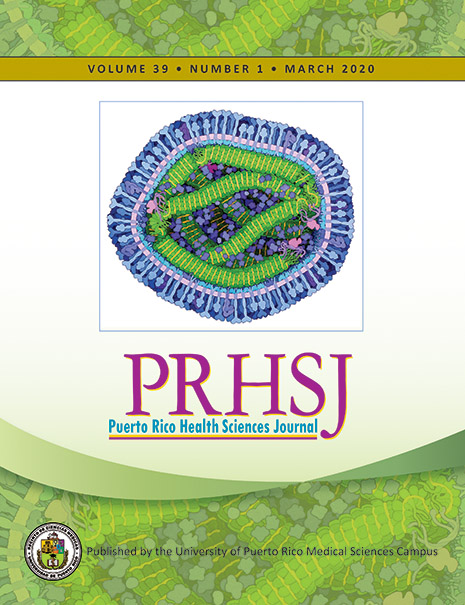Abstract
Objective: More than 50% of the premature infant survivors of intraventricular hemorrhage (IVH) develop serious neurological sequelae, including progressive posthemorrhagic hydrocephalus (PPHH) requiring a ventriculo-peritoneal (VP) shunt. Little is known about the risk factors associated with the development of PPHH in the neonatal population of Puerto Rico and thus the purpose of this study was to learn more about those risk factors. Methods: We performed a retrospective analysis on neonates born from 2013 through 2017 who had been diagnosed with IVH. The data extracted included gender, gestational age at birth, birth weight, IVH grade, and whether the child had required a VP shunt. Results: Two hundred and sixty-one survivors of neonatal IVH were included in the study. The overall mortality rate was 19.4%, and the incidence of PPHH was 7.7% (N = 20). The results from the Fisher’s exact test for the association between the development of PPHH and the independent variables of gender (p = 0.06), birth weight (p = 0.18), and gestational age (p = 0.21) were not statistically significant. Binomial logistic regression showed that subjects with IVH (grades 3 and 4) were 20 times more likely to exhibit PPHH. Conclusion: The incidence of PPHH secondary to IVH was slightly lower in our population compared to such incidence in other populations reported in the literature; however, the overall mortality rate was similar. The only statistically significant associated risk factor for PPHH was the severity of the IVH.
Authors who publish with this journal agree to the following terms:
a. Authors retain copyright and grant the journal right of first publication with the work simultaneously licensed under a Creative Commons Attribution License that allows others to share the work with an acknowledgement of the work's authorship and initial publication in this journal.
b. Authors are able to enter into separate, additional contractual arrangements for the non-exclusive distribution of the journal's published version of the work (e.g., post it to an institutional repository or publish it in a book), with an acknowledgement of its initial publication in this journal.
c. Authors are permitted and encouraged to post their work online (e.g., in institutional repositories or on their website) prior to and during the submission process, as it can lead to productive exchanges, as well as earlier and greater citation of published work (See The Effect of Open Access).
